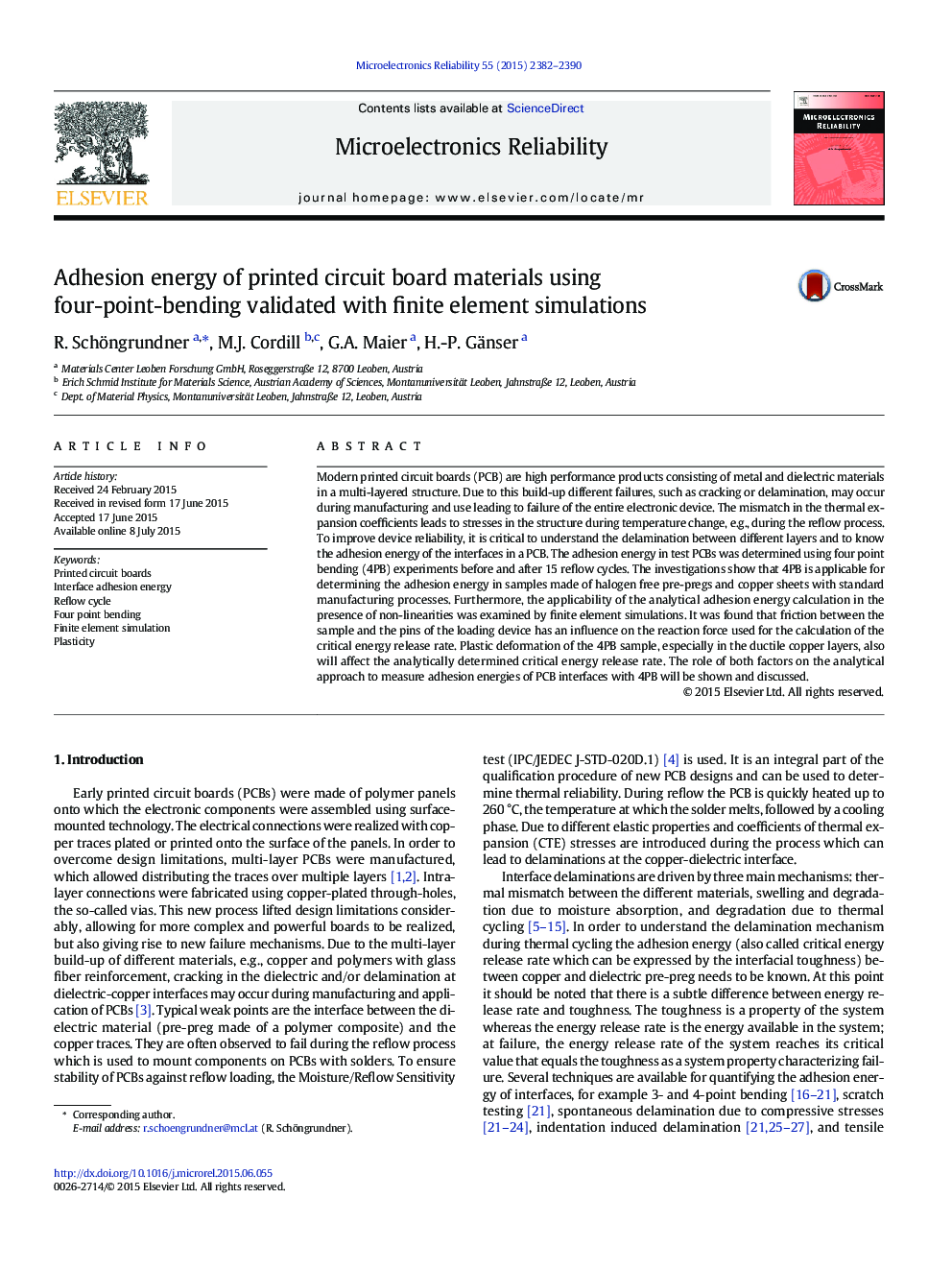| کد مقاله | کد نشریه | سال انتشار | مقاله انگلیسی | نسخه تمام متن |
|---|---|---|---|---|
| 548949 | 872300 | 2015 | 9 صفحه PDF | دانلود رایگان |
• 4 point bending is suitable to measure the interface strength of PCB materials.
• The influence of reflow cycles on the interface strength can be clearly shown.
• Friction leads to an overestimation of the calculated interface adhesion.
• Plastic deformation leads to an overestimation of the calculated interface adhesion.
Modern printed circuit boards (PCB) are high performance products consisting of metal and dielectric materials in a multi-layered structure. Due to this build-up different failures, such as cracking or delamination, may occur during manufacturing and use leading to failure of the entire electronic device. The mismatch in the thermal expansion coefficients leads to stresses in the structure during temperature change, e.g., during the reflow process. To improve device reliability, it is critical to understand the delamination between different layers and to know the adhesion energy of the interfaces in a PCB. The adhesion energy in test PCBs was determined using four point bending (4PB) experiments before and after 15 reflow cycles. The investigations show that 4PB is applicable for determining the adhesion energy in samples made of halogen free pre-pregs and copper sheets with standard manufacturing processes. Furthermore, the applicability of the analytical adhesion energy calculation in the presence of non-linearities was examined by finite element simulations. It was found that friction between the sample and the pins of the loading device has an influence on the reaction force used for the calculation of the critical energy release rate. Plastic deformation of the 4PB sample, especially in the ductile copper layers, also will affect the analytically determined critical energy release rate. The role of both factors on the analytical approach to measure adhesion energies of PCB interfaces with 4PB will be shown and discussed.
Figure optionsDownload as PowerPoint slide
Journal: Microelectronics Reliability - Volume 55, Issue 11, November 2015, Pages 2382–2390
